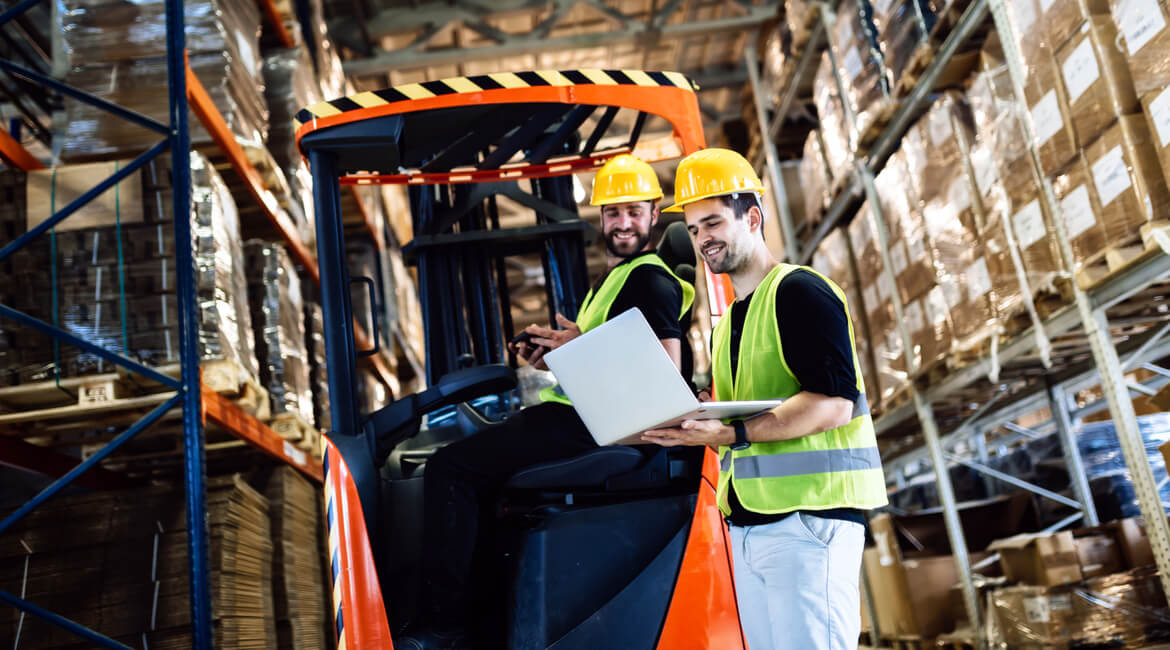Advanced locating systems: the best solutions for your customers

Real-time Locating Systems (RTLS) represent a valid support to companies to manage several issues concerning operations, including workplace protection and the safety of workers.
These issues result as challenging as they are important and cross-disciplinary to many sectors of the industry. Accident prevention is a priority for every organisation, whether it concerns warehouses, production areas, storage areas, hospitals or construction sites.
RTLS systems provide enterprises with unprecedented visibility on how workers and vehicles operate in work environments, both indoor and outdoor. In addition, they offer innovative tools, dashboards and reports, that help the company in managing critical areas. For instance, by analyzing insights from reports, the company can identify possible issues before an accident occurs.
Not only that: the use of these systems in combination with other technologies makes it possible to completely review the approach to safety. This is the case of Artificial Intelligence (AI), used to analyze big data obtained from RTLS. Industrial sites thus become places that can be rethought according to internal requirements, in a perspective of greater efficiency and safety.
Advanced locating systems meant for workplace safety
The most advanced RTLS combine the use of various technologies to track and locate assets of the company. We are consequently talking about material handling equipment such as forklifts, electric pallet trucks, diggers and aerial platforms. RTLS from a safety perspective will not only locate assets but also walking people moving in areas where machines are at work.
These systems are composed of hardware elements – such as devices – mounted on board machines, and tags supplied to workers and software platforms. Platforms that, thanks to a bi-directional network, receive and send data to hardware devices.
These devices use several technologies – Bluetooth, GPS, Ultra Wide Band (UWB) – according to the areas meant for usage and the accuracy needed in locating.
Objects that become “smart” thanks to IoT (Internet of Things) and RTLS. These technologies, along with the analysis of the collected big data (thanks to AI) bring efficiency in all processes inside and outside the workplace.
A faster and more efficient response to accidents and unexpected events
Through wearable devices (Tags) supplied to staff and aimed at tracking, it is possible to monitor the position of individuals whilst preserving their privacy. The company can therefore implement an effective supervision of health for people engaged in indoor or outdoor work activities. This allows to increase the levels of safety in the workplace and ensure compliance with the rules.
Thanks to the use of integrated sensors and – depending on the need – UWB, WiFi and BLE technologies, individual devices ensure to manage real-time locating. Plus, they also make it possible to govern alarms that are, for example, related to access to dangerous areas and interferences with other workers. Then again, they also monitor human ground-based events, impacts and the use of personal protective equipment.
A particularly at-risk group for which specific devices exist is, for instance, that of lone workers, like guards, night watchmen, couriers – but also service providers, such as security guards, stewards for events, bodyguards, urban hygiene and cleaning services workers. Tags designed for these workers are indispensable tools to ensure their safety. Through the device, the operator can ask for help in case of need or make calls for production lines’ maintenance and supply. Furthermore, access control can be performed through the same devices without the need for physical barriers.Thanks to the knowledge of the exact location of the worker, it is possible to promptly send a rescue team.
Locating-based collision avoidance systems
RTLS systems implement safety in particular through collision avoidance systems. These are characterized by devices (radars) that are mounted on board machines (typically forklifts but also diggers, aerial platforms, bulldozers). Radars, thanks to the UWB technology, detect if there are other machines equipped with the same device in the vicinity but also workers wearing tags.
The measurement of distances, between machines and / or between machines and walking-workers, ensures a way to identify and manage risk in production areas or in the warehouse. Moreover, these systems allow to implement – even automatically – actions that help prevent collisions and potentially fatal accidents.
Identifying and managing critical areas thanks to locating systems
In working environments, a small distraction is often enough to cause an accident. An unworn helmet, an access to a particularly dangerous area or the misuse of a vehicle can put at serious risk the safety of workers.
Real-time locating systems represent a way to better manage these critical issues with efficient and easy-to-implement solutions. Therefore, IoT allows to connect all objects and assets located inside and outside the workplace.
It is therefore not just about vehicles and workers. These devices can also be placed in close proximity to access to restricted areas and work as a “barrier”, letting only to authorized personnel enter.
A factor that lets the company improve compliance with safety requirements, without having to introduce new physical barriers. Likewise, locating systems can allow or prevent the use of a certain vehicle.
Rethinking working spaces in a greater safety perspective
Data collected by IoT devices in the workplace is transformed into strategic information thanks to Artificial Intelligence algorithms.
Advanced locating systems leverage AI and Machine Learning algorithms to create reports aimed at improving the decision-making process for workers. With these systems it is possible, for example, to use transit data in various areas and integrate it with other data related to nearly occurred accidents.
This type of reporting allows the company to identify critical areas and evaluate the best strategies for a timely resolution of risky situations.
